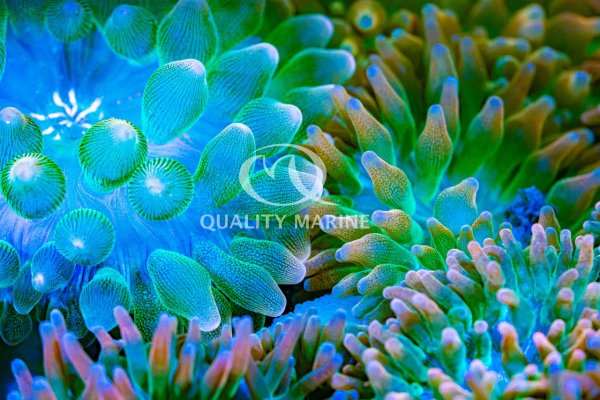In the warm, sun-drenched waters that span from Micronesia to the Red Sea, vibrant coral reefs are home to one of aquarium keeping's most iconic species: the Bulb Anemone (Entacmaea quadricolor) a sentinel of symbiosis and adaptation. In their natural state, Bulbs thrive in habitats ranging from shallow, sunlit reefs, even some exposed at high tide, to deeper, more solitary realms beyond the reach of much light at all. They are incredibly beautiful and come in a wide variety of colors and even forms. Sometimes bright pink, sometimes orangish, and occasionally a wild blend of red, pink, orange and white, they are also found in various shades of green and brown. They can be a mass of tight bubbles or spread out with long thin tentacles. Some of them will stay small, splitting into multiples before they ever get bigger than a few inches from edge to edge, while some will spread out and sprawl, getting up to eight inches across or more!
Symbiotic algae only supply some of the nutrition needed by Bulb Anemones. The rest they have to get by eating. Most small bulbs won't need feeding more than once or twice a week. Small bits of frozen food, like Chopped Prawn, Chopped Mussel, or even Krill from Gamma Foods are excellent choices. The food must be smaller than the length of the oral opening. For those of you who want to have Clownfish with your Anemone, some Clowns will feed their nems themselves. Even if this is the case, we suggest offering the Anemone some food on a weekly basis anyway. If it takes it, it needed it, if it doesn't take it, the clowns surely will. Click here to learn more

Symbiotic algae only supply some of the nutrition needed by Bulb Anemones. The rest they have to get by eating. Most small bulbs won't need feeding more than once or twice a week. Small bits of frozen food, like Chopped Prawn, Chopped Mussel, or even Krill from Gamma Foods are excellent choices. The food must be smaller than the length of the oral opening. For those of you who want to have Clownfish with your Anemone, some Clowns will feed their nems themselves. Even if this is the case, we suggest offering the Anemone some food on a weekly basis anyway. If it takes it, it needed it, if it doesn't take it, the clowns surely will. Click here to learn more












